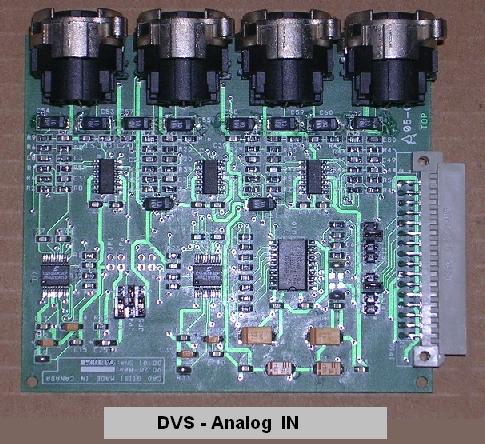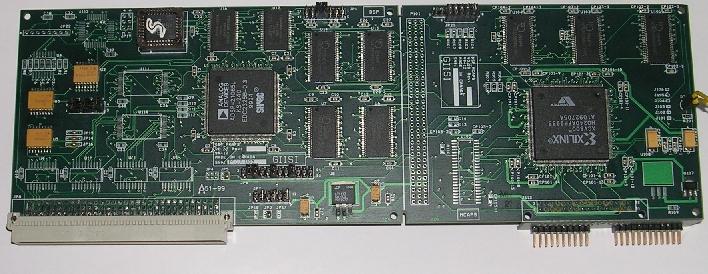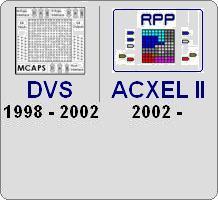DVS analog board (1999)
- Analog IN board with AD converters - 24 bits 96 khz.
- Analog OUT board (not shown) with DA converters - 24 bits 96 khz.
DVS system (1999)
DVS view from inside:
- Mother board (Backplane)
- Master Processor (Sharc ADSP21065L)
- 1 board synthesis with MCAPS and DSP (Sharc ADSP21065L)
- 1 board analog OUT
- 1 board analog IN
- 1 board interface (PC, MIDI)
- Power Supply
- A Main processor (DSP Sharc)
- 4 synthesis boards sites comprising the new MCAPS processors which replace the Harmonic Processors, with extended capacities.
- Analog input-outputs
However the DVS does not have a console, it is dependant on a PC editing software to which it is connected by serial port. It was considered to associate an analysis board, a console and a hard disk to it.
The DVS constitutes the Prototype bench bench for Acxel 2 RACK under development. However Acxel 2 RACK could operate at an entirely stand alone manner and be connected if needed to a Host computer for editing requirements or be connected to a Grapher. Acxel 2 RACK preserves slots for synthesis modules.
The DVS made it possible to identify a certain number of weaknesses and limits on the MCAPS processor mainly on its flexibility, which led to RPP processor.





























